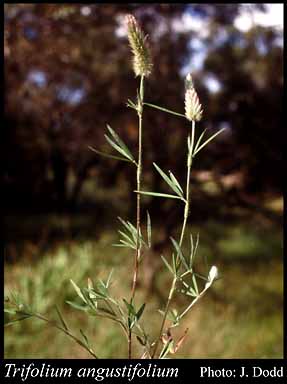- Reference
- Sp.Pl. [Linnaeus] 2:769 (1753)
- Conservation Code
- Not threatened
- Naturalised Status
- Alien to Western Australia
- Name Status
- Current
Erect or decumbent annual, herb, 0.1-0.6 m high. Fl. pink-purple, white, green, Sep to Dec or Jan. White to grey sand, brown sandy clay, ironstone gravel, granite. Coastal dunes, flats, rock outcrops, along tracks, in wetlands.

Distribution
- IBRA Regions
- Avon Wheatbelt, Esperance Plains, Geraldton Sandplains, Jarrah Forest, Mallee, Swan Coastal Plain, Warren.
- IBRA Subregions
- Fitzgerald, Katanning, Lesueur Sandplain, Northern Jarrah Forest, Perth, Recherche, Southern Jarrah Forest, Warren, Western Mallee.
- IMCRA Regions
- Central West Coast, Leeuwin-Naturaliste, WA South Coast.
- Local Government Areas (LGAs)
- Albany, Armadale, Belmont, Boyup Brook, Broomehill-Tambellup, Busselton, Chittering, Cockburn, Coorow, Cranbrook, Denmark, Esperance, Gingin, Gnowangerup, Gosnells, Harvey, Kalamunda, Kojonup, Mundaring, Murray, Narrogin, Perth, Plantagenet, Rockingham, Serpentine-Jarrahdale, Swan, Toodyay, Waroona, West Arthur, York.
Management Notes (for the Swan NRM Region)
Alternative Names. Narrow Clover, Narrow-leaf Clover, White Clover.
General Biology. Growth form. Herb. Life form. Annual. Reproduction. Seed. Dispersal. Sheep (adhesion), agricultural activities.
Notes. Has low germination rates in unsuitable environmental conditions. Seed attached to the fleece of sheep can be transported large distances. Growth is directly related to water availability - under low water availablity growth rate can decelerate but flowering remains unaffected.
Additional information. Origin. North Africa, Macronesia, temperate Asia, Europe. History of use/introduction. Forage, pasture improvement. Similar exotic species. Trifolium species.
Suggested method of management and control. Spot spray with 1% glyphosate before flowering, otherwise spot spray Lontrel® 3 ml/10 L (150 ml/ha) up to the 6 leaf stage. Read the manufacturers' labels and material safety data sheets before using herbicides. For further information consult the Australian Pesticides and Veterinary Medicines Authority to determine the status of permits for your situation or state.
Management Calendar
| Calendar Type | Jan | Feb | Mar | Apr | May | Jun | Jul | Aug | Sep | Oct | Nov | Dec | Comments |
|---|---|---|---|---|---|---|---|---|---|---|---|---|---|
| Germination | Y | Y | Y | ||||||||||
| Active Growth | Y | Y | Y | Y | Y | Y | |||||||
| Flowering | Y | Y | Y | Y | Y | ||||||||
| Fruiting | Y | O | Y | Y | |||||||||
| Optimum Treatment | Y | Y | Y | O | O |
Legend: Y = Yes, regularly, O = Occasionally, U = Uncertain, referred by others but not confirmed.
References
- Brown, K. & Brooks, K. (2002) Bushland Weeds: A Practical Guide to their Management. Environmental Weeds Action Network, Greenwood.
- Can, E., Celiktas, N., Hatipoglu, R. & Avci, S. (2009) Breaking seed dormancy of some annual Medicago and Trifolium species by different treatments. Turkish Journal of Field Crops, 14 (2): 72-78.
- Hussey, B.M.J., Keighery, G.J., Dodd, J., Lloyd, S.G. & Cousens, R.D. (2007) Western Weeds. A guide to the weeds of Western Australia. 2nd Edition. The Plant Protection Society of Western Australia, Victoria Park.
- Manzano, P. & Malo, J.E. (2006) Extreme long-distance seed dispersal via sheep. Frontiers in Ecology and the Environment, 4 (5): 244-248.
- Tuttobene, R., Gresta, F., Sortino, O., Frasca Polara, F., Dipasquale, M. & Abbate, V. (2008) Characterization of native populations of Trifolium spp. Options Mediterraneennes, A (79): 395-398.
- USDA, ARS, National Genetic Resources Program (2009) Germplasm Resources Information Network - (GRIN). National Germplasm Resources Laboratory, Beltsville, Maryland. URL: https://npgsweb.ars-grin.gov/gringlobal/taxon/taxonomysimple.aspx - Accessed October 2009.
- Vrahnakis, M.S., Kostopoulou, P., Lazaridou, M., Merov, T. & Fotiadis, G. (2008) Modelling growth responses of annual legumes to water shortage. Options Mediterraneennes, A (79): 275-278.